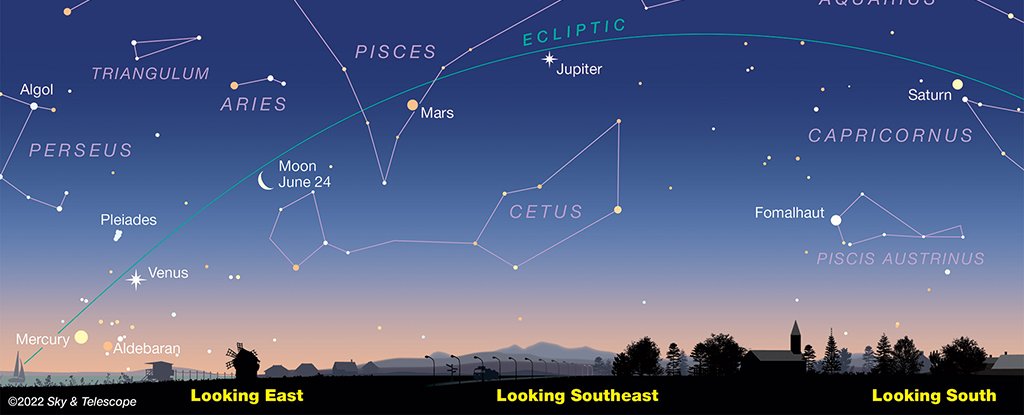Sky watchers have something extra special to look forward to later in June, as all five of the planets that we can see with the naked eye – Mercury, Venus, Mars, Jupiter, Saturn – are going to line up in the sky.
Not only that, but they're going to appear in order of their distance from the Sun, from left to right as you scan the horizon: that means starting with Mercury (an average of 58 million kilometers or 36 million miles from the Sun) and ending with Saturn (an average of 1.4 billion kilometers or 886 million miles from the Sun).
The not-to-be missed celestial show will be visible towards the eastern horizon just before the Sun rises and obscures the view. In the Northern Hemisphere, look towards the east and the south; in the Southern Hemisphere, look towards the east and the north.
While the arrangement should be visible throughout the month of June, note that on the mornings of June 3 and June 4, the separation between Mercury and Saturn will be at its smallest: a mere 91 degrees.
Another date to bear in mind is June 27. This will see the separation increase to 107 degrees, and the waning crescent Moon should show up between Venus and Mars (you could even think of it as a stand-in for Earth).
Mercury will be clearly visible on June 27 as well, making it easier for you to spot it before working your way to the right along the horizon. On this particular morning, the planetary show should be visible for about an hour.
Those dates are most relevant to the US – these events and the visibility of the planets may vary in terms of dates depending on where you are in the world. There should be plenty of opportunity for everyone to see the five planets though, even if you get a few cloudy days across the month.
Being able to see the planets together like this is known as a conjunction, and conjunctions involving five planets are rather rare – the last one was in December 2004, so we'd recommend taking the opportunity of seeing this one.
On certain days you may even be able to catch a look at Uranus and Neptune too, astronomers say. However, you're going to need binoculars and a telescope to spot these dots, as these planets can't be seen with the naked eye here on Earth.
This has been in the works for a while: you might remember that Saturn, Mars, Venus, and Jupiter were lined up in the sky during the month of June. It's all a trick of perspective of course – but these are stunning sights to observe.
- Karlston and Mutton
-

 2
2



Recommended Comments
There are no comments to display.
Join the conversation
You can post now and register later. If you have an account, sign in now to post with your account.
Note: Your post will require moderator approval before it will be visible.